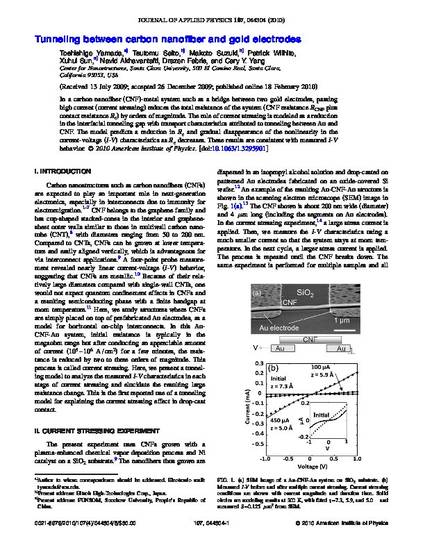
Article
Tunneling between carbon nanofiber and gold electrodes
Electrical and Computer Engineering
Document Type
Article
Publication Date
2-15-2010
Publisher
American Institute of Physics Publishing
Disciplines
Abstract
In a carbon nanofiber (CNF)-metal system such as a bridge between two gold electrodes, passing high current (current stressing) reduces the total resistance of the system (CNF resistance RCNF plus contact resistance Rc) by orders of magnitude. The role of current stressing is modeled as a reduction in the interfacial tunneling gap with transport characteristics attributed to tunneling between Au and CNF. The model predicts a reduction in Rc and gradual disappearance of the nonlinearity in the current-voltage (I-V) characteristics as Rc decreases. These results are consistent with measured I-V behavior.
Citation Information
T. Yamada, T. Saito, M. Suzuki, P. Wilhite, X. Sun, N. Akhavantafti, D. Fabris, and C.Y. Yang, “Tunneling between carbon nanofiber and gold electrodes,” Journal of Applied Physics 107, 044304 (5 pp) (2010). https://doi.org/10.1063/1.3295901

Copyright © 2010 American Institute of Physics Publishing. Reprinted with permission.